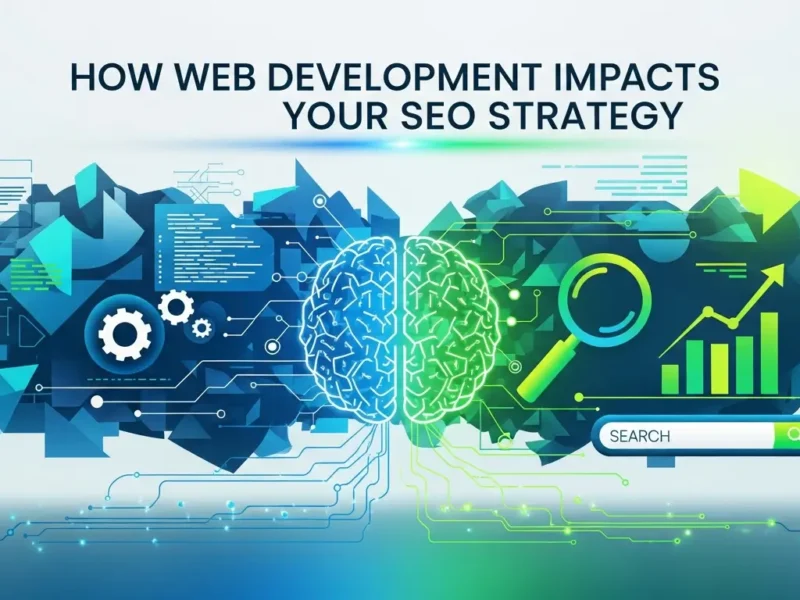A modern web development company is far more than just a team of coders. Think of them as digital architects who build the online world, creating everything from simple, static websites to complex, dynamic web applications. They’re at the forefront of technology, combining creativity with technical expertise to ensure a business’s online presence is not only functional and beautiful but also secure, scalable, and optimized for success. In today’s digital landscape, where a company’s website is often its first impression, a web development firm’s role is absolutely critical. They don’t just build a site and walk away; they provide a comprehensive suite of services that cover the entire lifecycle of a digital product. If you’re looking for a web development company in Noida, you’ll find many firms that specialize in these exact services.
Let’s explore the key responsibilities and services that define what a modern web development company does.
The Core of Modern Web Development: Beyond Just a Website
The term “web development” is a broad umbrella that covers a variety of specialized services. At its core, it’s about building and maintaining a digital product on the internet or an intranet. This can range from a single static page to a massive e-commerce platform or a social media network. Modern web development firms operate in a multidisciplinary environment, where different teams collaborate to bring a project to life. This process typically involves several key stages, each with its own set of expertise.
1. Strategic Planning & Discovery
Before a single line of code is written, a modern web development company works to understand the client’s business goals, target audience, and unique value proposition. This initial phase, often called the discovery phase, is arguably the most important. It involves:
- Requirement Gathering: A deep dive into what the client needs the website or application to do. What problems will it solve? Who is the intended user?
- Competitor Analysis: Researching what the client’s competitors are doing well (or not so well) to identify opportunities and create a unique strategy.
- Technical Consultation: Advising on the best technologies, platforms, and frameworks to use, whether it’s a custom-built solution, a CMS like WordPress, or a specific e-commerce platform like Shopify.
- Project Scoping: Defining the project’s scope, timeline, and budget to ensure everyone is on the same page and the project is delivered efficiently.
This phase lays the groundwork for a successful project, ensuring the final product aligns perfectly with the client’s business objectives.
The Development Process: From Concept to Code
Once the strategy is locked in, the development process begins. This is where the digital blueprint comes to life, broken down into two main areas: front-end and back-end development.
2. Front-End Development & UX/UI Design
Front-end development focuses on everything a user sees and interacts with directly in their browser. A modern web development firm’s expertise in this area is what makes a website not just functional but a pleasure to use.
- User Experience (UX) Design: This is all about creating a seamless, intuitive, and efficient user journey. UX designers plan the site’s structure, navigation, and content flow to ensure a positive experience.
- User Interface (UI) Design: The UI is the visual component—the layout, colors, typography, buttons, and graphics. UI designers create an aesthetically pleasing interface that reflects the brand and guides the user.
- Responsive Web Design: A crucial modern practice, this ensures the website looks and functions perfectly on any device, from a desktop computer to a smartphone or tablet.
- Coding the Interface: Using languages like HTML, CSS, and JavaScript, front-end developers bring the designer’s vision to life, creating interactive elements, animations, and a responsive layout.
The goal of front-end development is to create a fast, accessible, and visually appealing experience that keeps users engaged.
3. Back-End Development & Database Management
The back-end is the unseen “engine” of the website, handling the server-side logic, database management, and integrations that make a site dynamic.
- Server-Side Logic: Back-end developers write code (using languages like Python, Node.js, PHP, or Ruby) that processes requests from the front-end, communicates with the database, and handles tasks like user authentication, form submissions, and e-commerce transactions.
- Database Management: They design and manage the database where all the website’s data is stored, including user information, product catalogs, and content. This ensures data is secure, organized, and easily accessible.
- API Development & Integration: Modern websites often need to connect with other services (e.g., a payment gateway, a social media platform, or an internal CRM). Back-end developers build and integrate Application Programming Interfaces (APIs) to allow these systems to “talk” to each other seamlessly.
- Cloud Infrastructure: Setting up and managing cloud-based servers and infrastructure (like Amazon Web Services or Google Cloud) to ensure the website is fast, secure, and scalable to handle high traffic.
Together, the front-end and back-end form a full stack development solution, where every component works in harmony to deliver a powerful digital experience.
The Ongoing Partnership: Post-Launch Services
The work doesn’t stop once the website is live. A truly modern web development company offers ongoing services to ensure the long-term success of the digital product.
4. Quality Assurance & Testing
Before launch, and on an ongoing basis, the site undergoes rigorous testing. This includes:
- Functional Testing: Checking that all buttons, links, and features work as intended.
- Performance Testing: Ensuring the site loads quickly and can handle traffic without slowing down.
- Security Audits: Identifying and patching vulnerabilities to protect against cyber threats.
- Cross-Browser & Device Testing: Verifying that the site works consistently across different browsers and devices.
5. Maintenance & Support
A website is a living entity that needs regular care. A modern web development firm provides maintenance services to keep the site running smoothly and securely. This includes:
- Software Updates: Applying updates to the CMS, plugins, and frameworks to prevent security risks.
- Bug Fixes: Troubleshooting and resolving any issues that arise.
- Performance Monitoring: Continuously monitoring the site’s performance and making optimizations.
6. SEO & Digital Marketing
A beautiful and functional website is useless if no one can find it. Many web development companies now offer integrated SEO (Search Engine Optimization) and digital marketing services to ensure the site ranks high on search engines like Google.
- On-Page SEO: Optimizing the website’s structure, content, and code to be search-engine friendly.
- Technical SEO: Improving site speed, mobile-friendliness, and other technical aspects that affect search rankings.
- Content Strategy: Creating a plan for valuable, keyword-rich content (like this article!) that attracts and engages the target audience.
Why Partner with a Modern Web Development Company?
Partnering with an experienced web development company is a strategic investment in your business’s future. They provide a level of expertise and a full-service approach that a small in-house team or a freelance developer often can’t match. By handling everything from the initial strategy to post-launch maintenance, they allow you to focus on what you do best—running your business—while they build a powerful digital platform that drives growth, enhances your brand, and delivers a superior user experience. A reputable Web development company in Greater Noida can guide you through this process and help your business thrive online.
Ready to build a digital presence that stands out and performs? Let’s discuss how our expertise can transform your business goals into a stunning, high-performing website. Contact us today for a free consultation!



